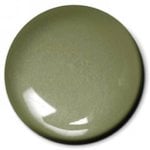I believe the blue RLM 83 has also been identified on aircraft operating from Norway. The evidence is mounting, it was certainly intended for maritime camouflage. It maybe that because in the case of late war colours, particularly 81 and 82, there was some confusion over exactly what they were supposed to be ("there is no acceptance inspection of the paint's shade") both the olive brown and olive green shades previously attributed to 81 and 83 are in fact both versions of 81. This is certainly what Ullmann suggested when he wrote this.
"Test order E2-45/31
(Development and verification of camouflage for the Mediterranean Sea)
These original documentation of the introduction of the new colour leads to the conclusion that we have to expect a lot of "dark blue" Luftwaffe aircraft in the Mediterranean theater.
Much more important for all those fighter-fans: This "dark green", formerly known as RLM 83, is nothing more, nothing less than a dark green variation of RLM 81."
Merrick was well aware of the dark blue colour applied to the Ju 88s of KG 54 operating in the Mediterranean, he discussed them in volume 1 of his Luftwaffe colours. A well known example landed in Switzerland by mistake. The colour is described as being between RLM 24 and RLM 78, but it was a match for neither. Now Ullmann (and others, I think Anders Hjortsberg might be updating some profiles ) believe it to have been the RLM 83 colour.
) believe it to have been the RLM 83 colour.
Cheers
Steve
"Test order E2-45/31
(Development and verification of camouflage for the Mediterranean Sea)
- -Report August 1943:
Alongside RLM 73 a "dark blue" colour will be use. Flight test in the near future. - Report September 1943:
Using the camouflage pattern "Land" and "Sea" with RLM 73 and the dark blue colour 300/III suggested for introduction. - Report November 1943:
Closed with report dated 10. November 1943. Colour RLM 83 "DARK BLUE" with RLM 72 for Sea- and RLM 70 for land aircraft suggested for introduction. - Sammelmitteilung 2, dated 15. August 1944:
…on the dark shades RLM 72, 73, 75, 81, 82, 83 …. (no colour was stated)
These original documentation of the introduction of the new colour leads to the conclusion that we have to expect a lot of "dark blue" Luftwaffe aircraft in the Mediterranean theater.
Much more important for all those fighter-fans: This "dark green", formerly known as RLM 83, is nothing more, nothing less than a dark green variation of RLM 81."
Merrick was well aware of the dark blue colour applied to the Ju 88s of KG 54 operating in the Mediterranean, he discussed them in volume 1 of his Luftwaffe colours. A well known example landed in Switzerland by mistake. The colour is described as being between RLM 24 and RLM 78, but it was a match for neither. Now Ullmann (and others, I think Anders Hjortsberg might be updating some profiles
Cheers
Steve
Last edited:

